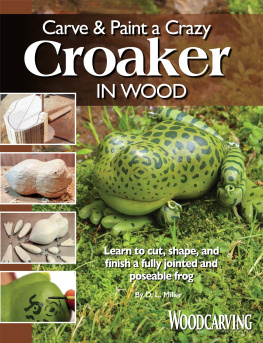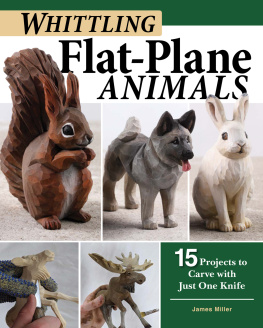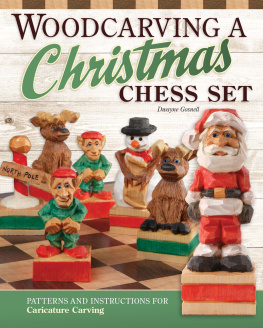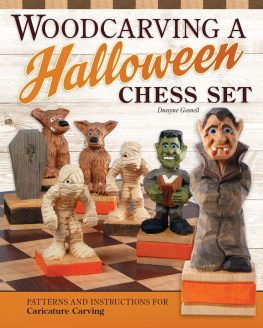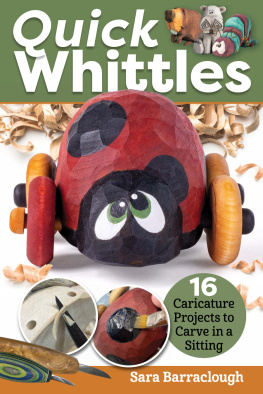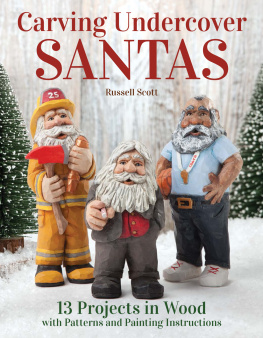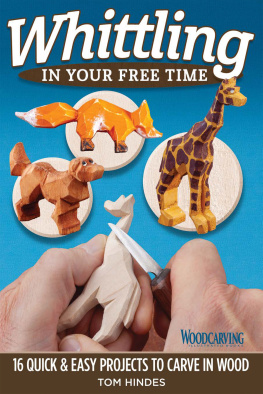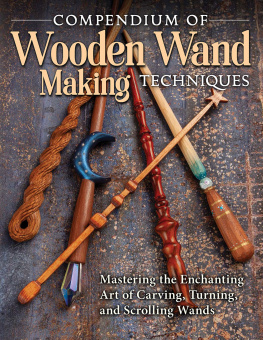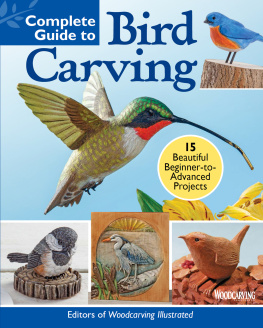Contents
Guide

2020 by Fox Chapel Publishing Company, Inc., 903 Square Street, Mount Joy, PA 17552.
Carve & Paint a Crazy Croaker in Wood is an original work, first published in 2020 by Fox Chapel Publishing Company, Inc.
The patterns contained herein are copyrighted by the author. Readers may make copies of these patterns for personal use.
The patterns themselves, however, are not to be duplicated for resale or distribution under any circumstances. Any such copying is a violation of copyright law.
Print ISBN 978-1-4971-0089-3
eISBN 978-1-6076-5869-6
The Cataloging-in-Publication Data is on file with the Library of Congress.
To learn more about the other great books from Fox Chapel Publishing, or to find a retailer near you, call toll-free 800-457-9112 or visit us at foxchapelpublishing.com.
We are always looking for talented authors. To submit an idea, please send a brief inquiry to .
Because working with knives, gouges, and other tools inherently includes the risk of injury and damage, this book cannot guarantee that performing the tasks in this book is safe for everyone. For this reason, this book is sold without warranties or guarantees of any kind, expressed or implied, and the publisher and the author disclaim any liability for any injuries, losses, or damages caused in any way by the content of this book or the readers use of the tools needed to complete the projects presented here. The publisher and the author urge all readers to thoroughly review each section and to understand the use of all tools before beginning any project.
Introduction

T he art of making poseable wooden animals and characters has been practiced for generations, with deep roots in folk art and puppetry. The tilt of the head, the position of the arm, or how a leg is folded will suddenly bring a piece to life and give your creation a personality that is not always achievable with a one-piece carving.
Over the years Ive created countless poseable characters, from tiny chipmunks and frogs to my largest wood creation to date, a life-size bear. With each new project, I look for designs that challenge me as a woodworker and carver as well as an artist and designer. I spend a lot of time at the workbench experimenting with different angle cuts, facial expressions, and ways to paint and finish a piece to give each creation as much personality as possible.
My overall goal with the Croaker is to mimic the movement and stance of a real-life frog sitting by the ponds edge. Ive learned over the years that although my designs are simple, the importance of the joint angles and placement of the hardware are critical if you wish to create a piece that truly portrays the character of the subject.
As with any creative project, its important that you express your own artistic style, use your preferred tools and materials, and work at the pace most comfortable for you. Make sure to follow the rear leg patterns carefully in order to create leg pieces that will easily collapse together and pose as though the frog is getting ready for a big jump.
This guide to making your very own Croaker will take you through the entire creative process, from picking out the best wood to imparting an irresistibly warm and whimsical personality through painting and finishing. In total, you will be making 11 pieces, each of which will help you develop your skills as a carver while giving you a new way to express your creativity.
I hope you find the process of making your very own Croaker as enjoyable as I have.
Amazing Frog Facts:
There are over 5,000 frog species in the world. They are found on every continent except Antarctica.
Each frog has a unique call; some frog calls can be heard a mile away.
Croaking is used by male frogs as a way to attract females.
Frogs dont need to drink water as they absorb it through their skin.
Some frogs can jump over 20 times their own body length; that translates to a human jumping 30m.
Every year that a frog goes into hibernation, a new layer of bone forms.
Frogs have teeth on their upper jaw, which they use to keep their prey in one place until they can swallow it.
The worlds largest frog is the goliath frog of West Africait can grow to 15 (38.1cm) and weigh up to 7 pounds.
Toads are frogs. The word toad is usually used for frogs that have warty and dry skin, as well as shorter hind legs.

Choosing the Right Wood
Choose a wood variety that is easy to carve but strong enough hold eye screws without the risk of pulling out.
Basswood
Pro: Basswood is one of the most popular woods for many carvers, because it is easy to cut and control without having to apply many high-pressure cuts. This variety is notable for its tight, consistent grain and relatively uniform coloring.
Con: The softness of the wood may not hold your eye screws securely, especially if your finished piece will be handled often.
Pro: Poplar is not as soft as basswood but can be easily carved by hand. It also holds eye screws more securely.
Con: Its not always easy to find large blocks of poplar. For many projects, you may need to laminate several panels together, adding another day to your project time.
Pine
Pro: Pine is inexpensive and will hold your hardware in place.
Con: You may need to laminate pieces together to form your blank. Pine is a harder wood for carving, and the inconsistent grain can sometimes be challenging for a beginning woodcarver.
Getting Started
Slice the board into four 6" (15.2cm) long pieces. Use a table saw. Glue and stack them, one on top of the other, with the grain moving in the same direction. Apply a generous coating of glue between layers. Then clamp the stack, applying even pressure on both sides to eliminate any gaps. Let dry for at least 12 hours and unclamp.
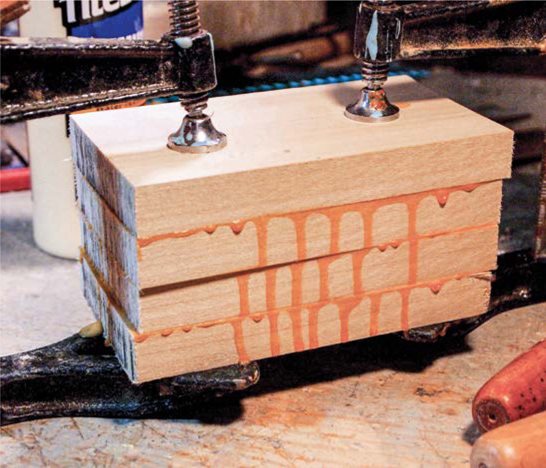
PREPPING AND ROUGHING OUT

Prepare the blank. Photocopy the Top View body pattern and attach it to the top of the stack using repositionable spray adhesive. Alternately, you can cut the pattern piece along the perimeter line and trace around it with a pencil or marker.


